The very best lenses for my personal favorite compact camera system for astrophotography: the Fuji X-Series.
This is a list of the highest scoring lenses for untracked nightscape photography and astrophotography. The score is a direct representation of light gathering capabilities based on the formula:
Score = (aperture area) × (angular area) × (suggested shutter speed)
Where the shutter speed is the longest suggested shutter speed in seconds based on the “500 Rule” (500/focal length). Aperture area is the surface area calculation of the clear aperture of the lens and the angular area is the angular field of view in square radians. This score is a mathematical calculation based purely on some simple physics. It doesn’t account for other considerations like the lens’s build quality or optical aberrations but it’s a good gauge of overall light gathering capability. You can also see the complete list of scores here, complete with calculations and further explanation.
All of the lenses listed here are my personal suggestions for photographers looking to get the absolute best astrophotography results with the Fuji X-Series cameras like the X-Pro1, X-E1, X-E2, X-M1, X-A1 and X-T1. These are the lenses that I use for my X-T1 and are the ones I would recommend most. Some of these lenses are manual focus lenses by Rokinon. If you’re willing to learn how to use manual focus, Rokinon lenses are spectacular performers. Note that I’m excluding from this list some of the larger Rokinon lenses like the Rokinon 10mm f/2.8, Rokinon 16mm f/2.0 and Rokinon 14mm f/2.8 even though they are excellent for astrophotography and are all available for the Fuji X mount. The reason they aren’t recommended below is because they are not dedicated mirrorless designs and so they tend to be rather large and heavy for a compact system camera. All of the lenses listed below are designed specifically for mirrorless cameras so they are more compact and balanced on small camera bodies like the Fuji X series.
If you would like to know more about the thoughts that went into creating this list, please read my article on how to pick a lens for Milky Way photography.
X Mount
Fujifilm XF 23mm f/1.4 R ( Amazon / B&H )
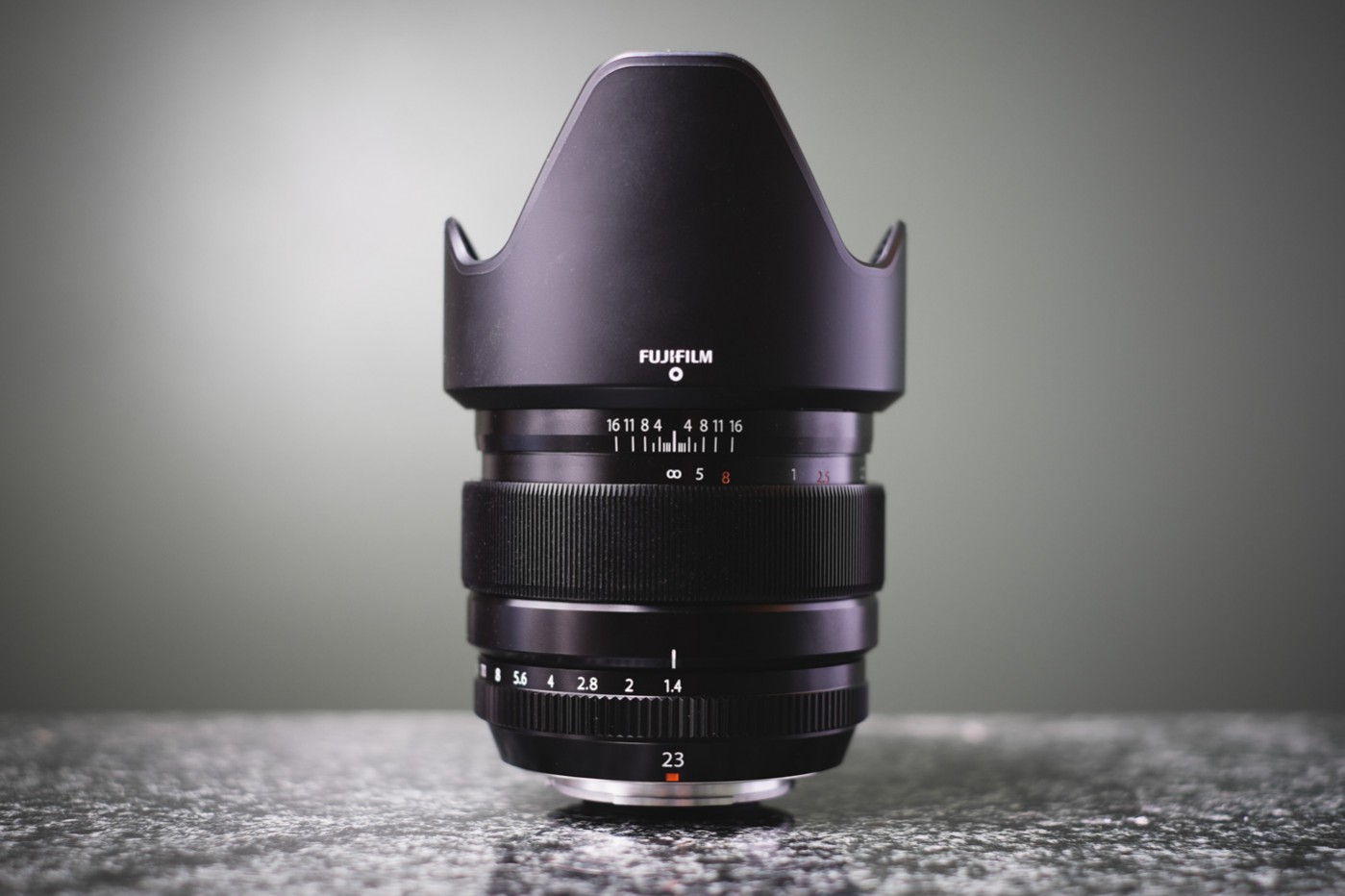
- Standard wide angle makes for a slightly tighter crop that’s good for panorama stitches. Very fast autofocus for regular shooting and a useful and an accurate manual focusing distance scale makes focusing on the stars easy. However, some coma aberration at the extreme corners at f/1.4 keep this lens from being perfect for astrophotography. Stop it down to f/2.0 for the best results.
- Score: 2967
- Sample Image:
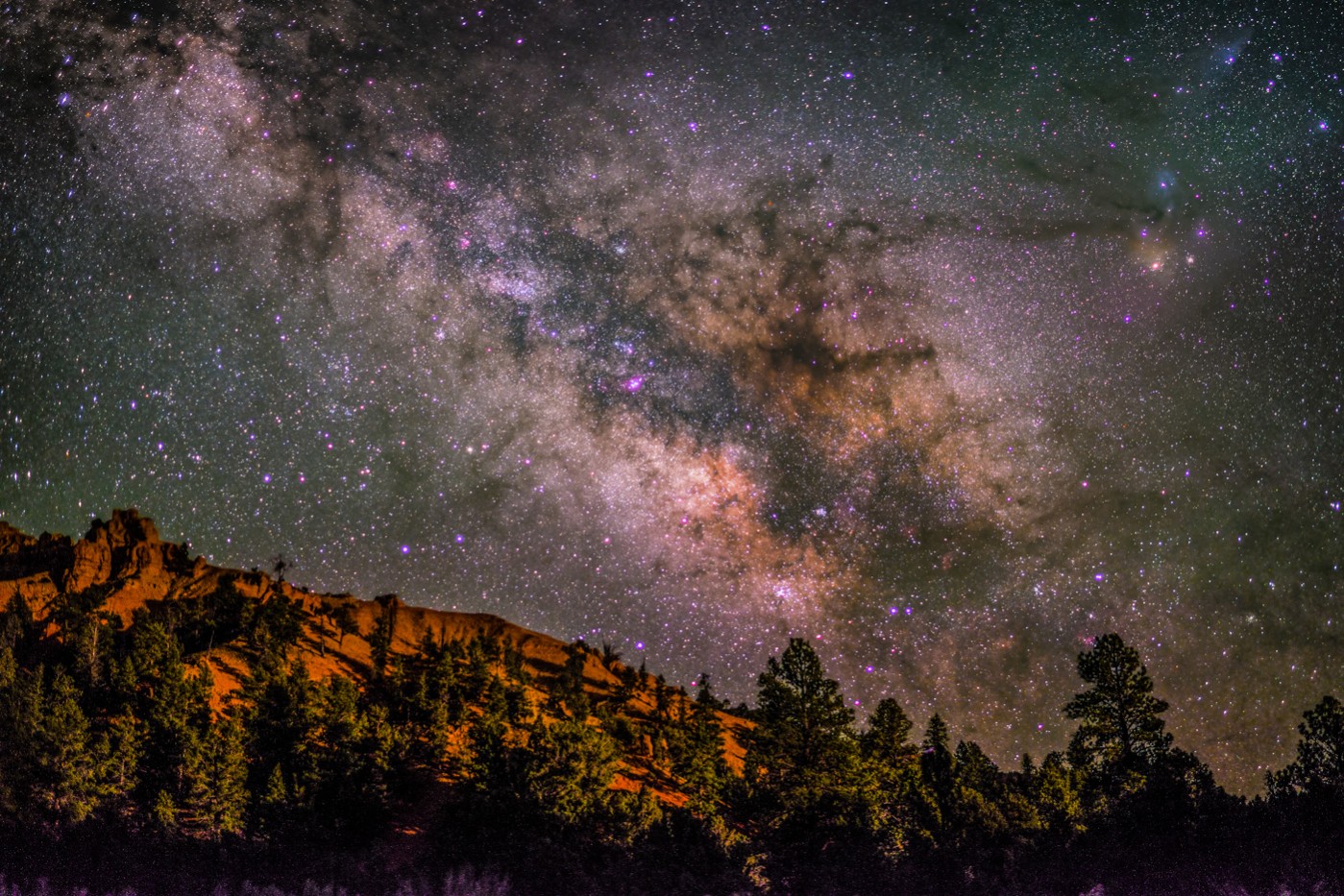
Rokinon 12mm f/2.0 NCS CS ( Amazon / B&H )
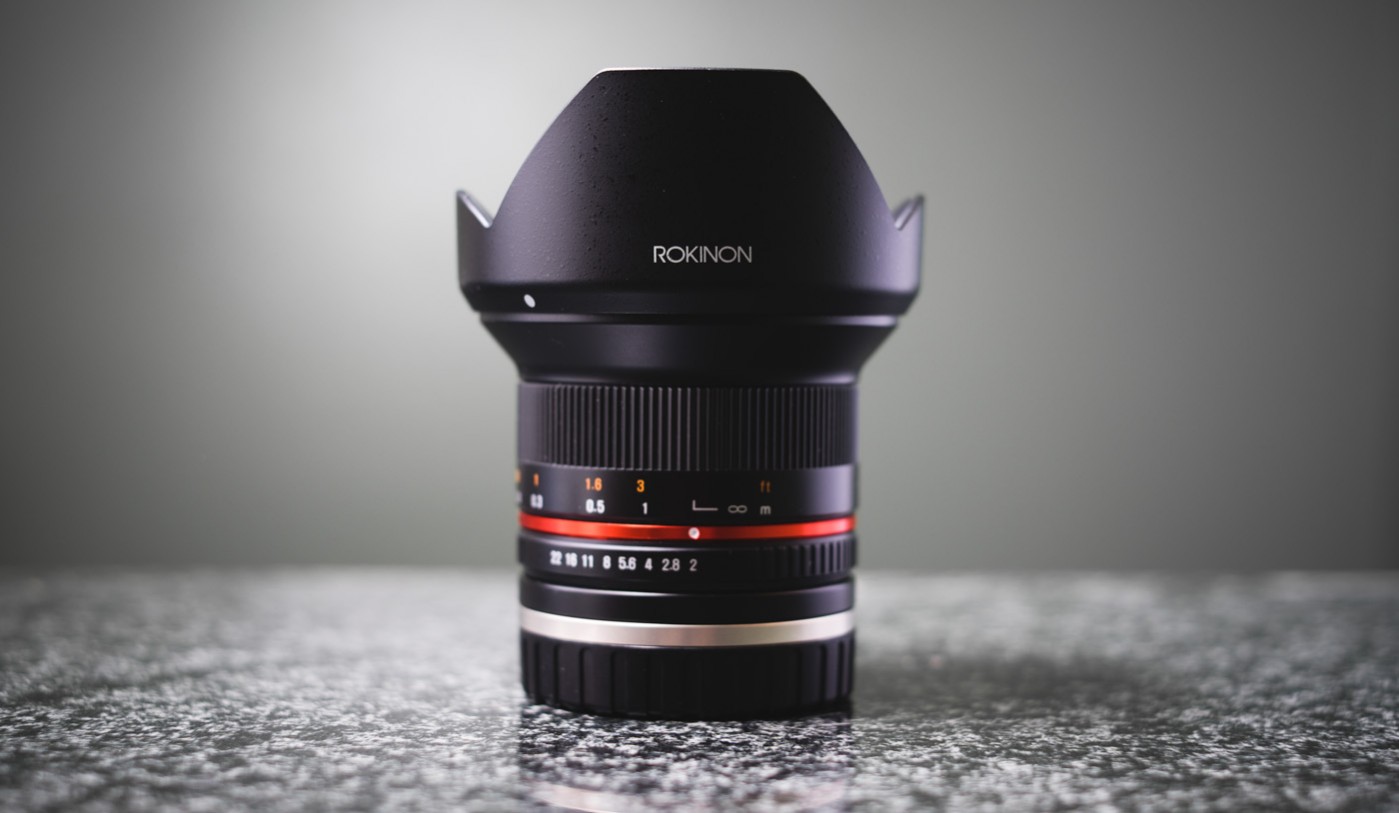
- Read the full review of the Rokinon 12mm f/2.0 NCS CS lens.
- Probably the best all around lens for astrophotography on a mirrorless system because it has the best combination of super-wide field of view and large aperture. It’s coma performance is very good, even at f/2.0. Manual focus.
- Score: 2176
- Sample Image:
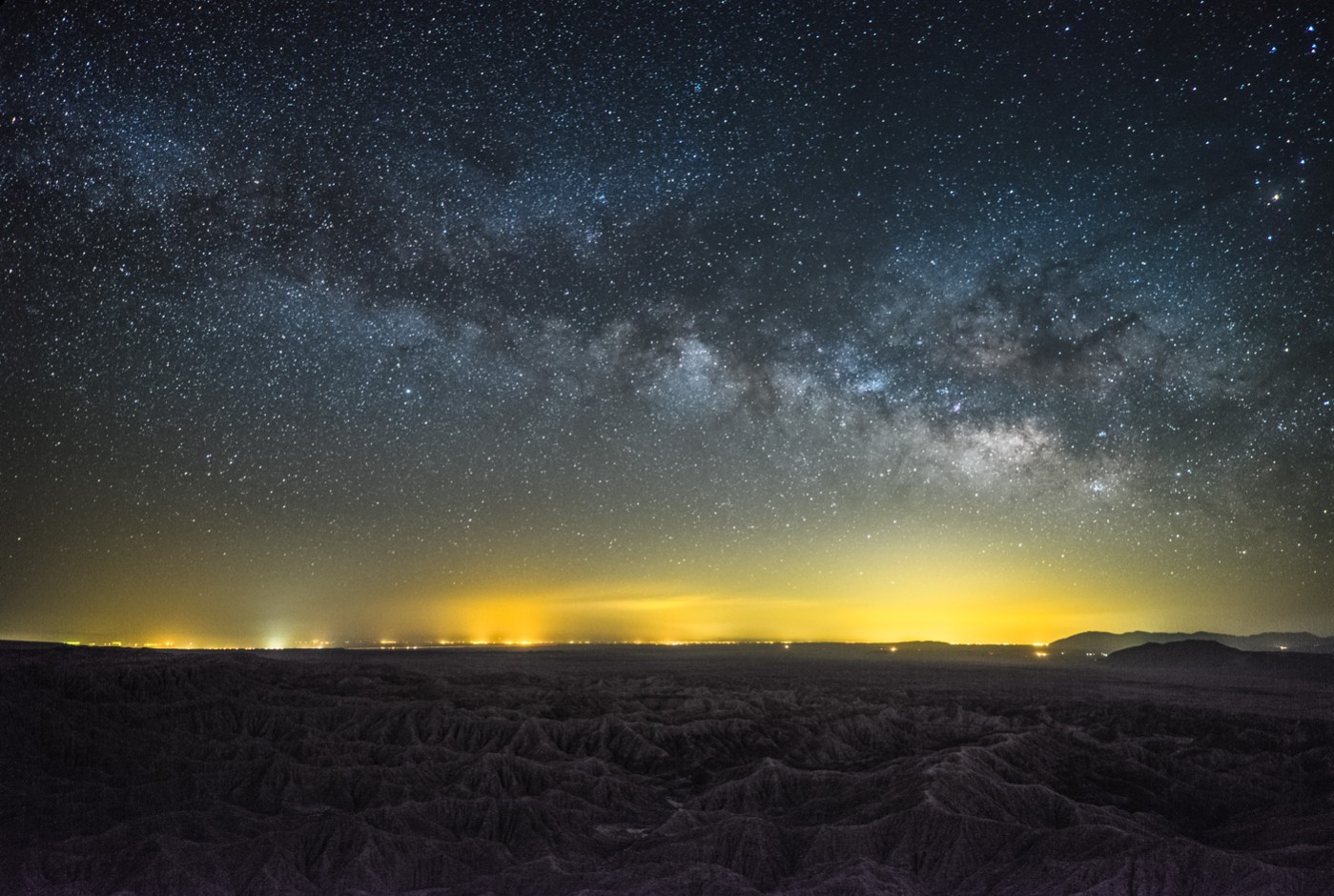
Fujifilm XF 18mm f/2.0 R ( Amazon / B&H )
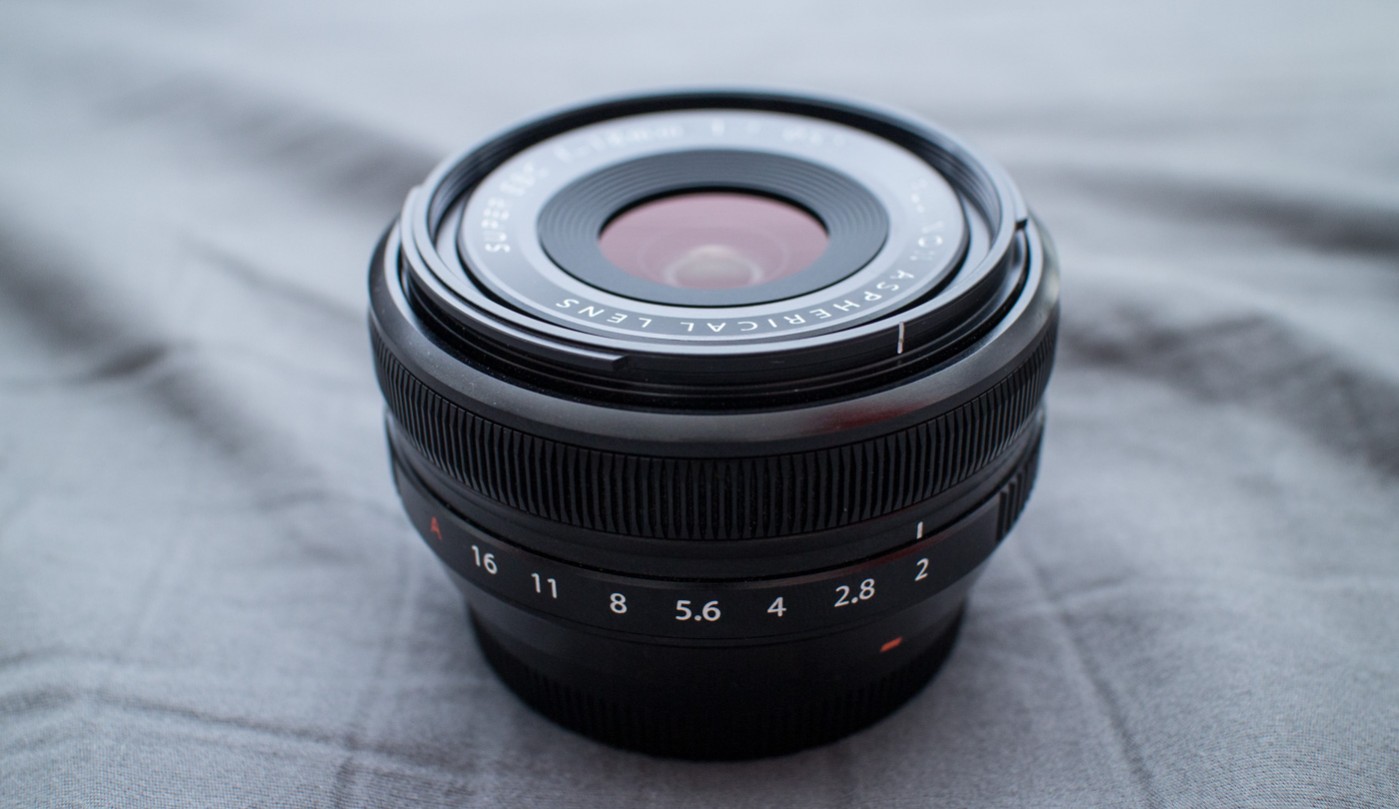
- Extremely compact autofocus lens with a wide field of view. Nearly a pancake lens which makes the camera nice and light. This lens surprised me because it performs pretty well wide-open at f/2.0 and is one of the cheaper lenses available for the X-Series cameras. Great lightweight walkaround lens that also makes great astrophotos.
- Score: 1505

Rokinon 8mm f/2.8 UMC Fisheye II ( Amazon / B&H )
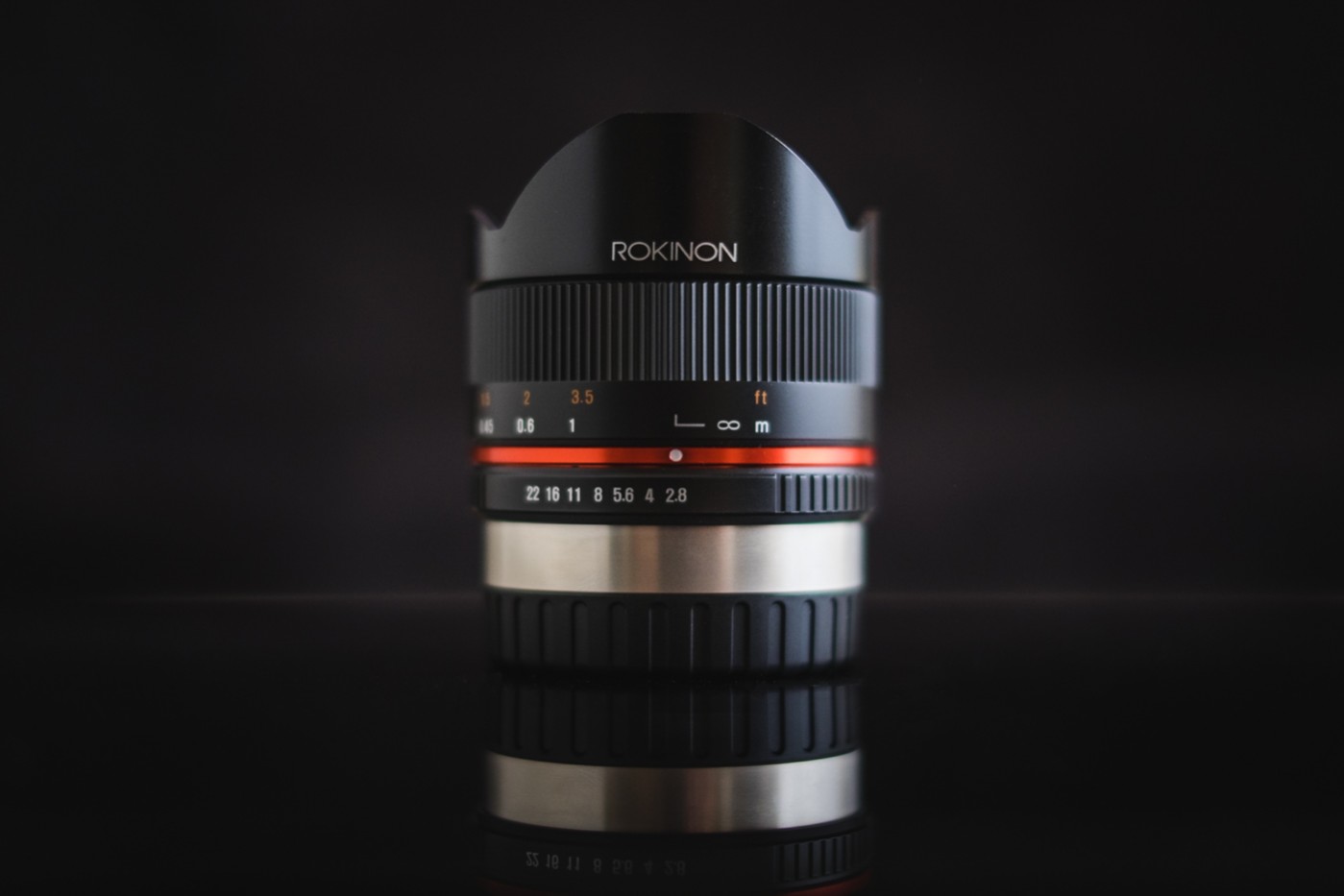
- Read the full review of the Rokinon 8mm f/2.8 UMC Fisheye II Lens.
- Ultra-wide angle fisheye that is both fast and extremely wide. Fisheye distortion requires you to keep the horizon in the center of the frame for a non-distorted look but the extreme field of view allows for exposure times that exceed 30 seconds without star trails. While often considered a novelty lens, a fisheye can provide some amazing views of the Milky Way. In some careful and patient hands, the results can be spectacular, especially when defished. Check out my article on how to defish photographs for spectacular results.
- Score: 1237
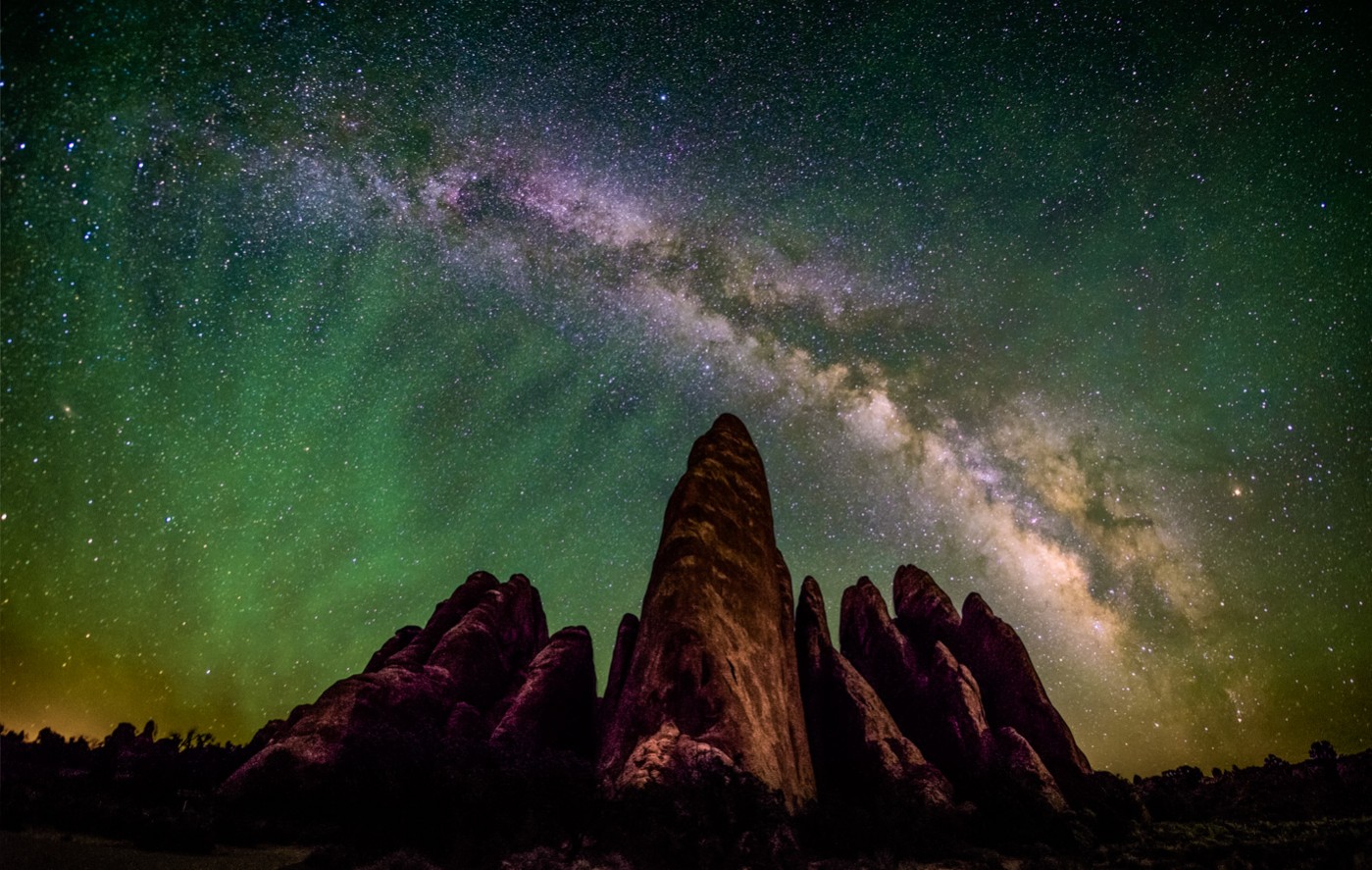
Fujifilm XF 14mm f/2.8 R ( Amazon / B&H )
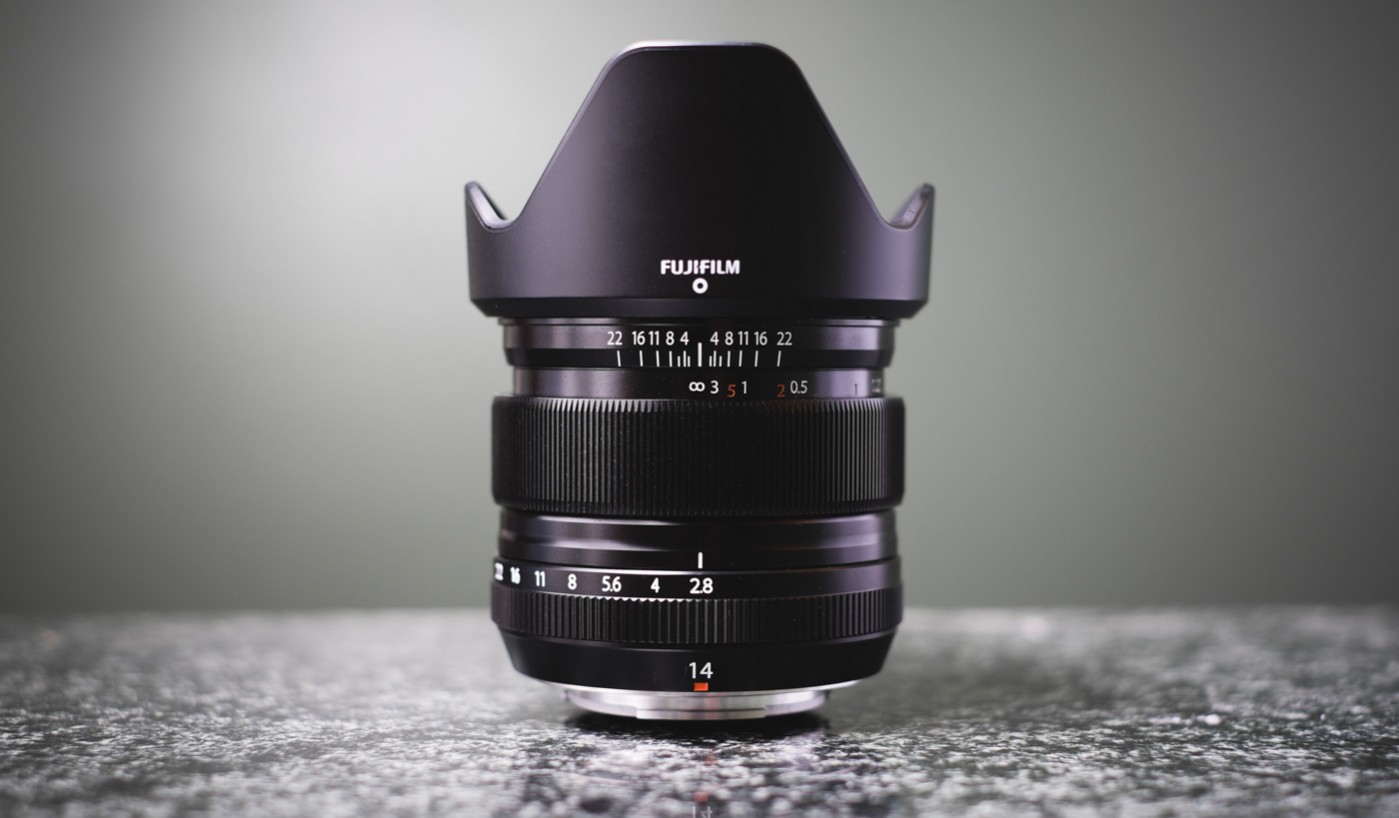
- Super-wide angle field of view with excellent sharpness wide open at f/2.8. Autofocus with a manual focus clutch mechanism similar to the XF 23mm f/1.4 R makes this lens great to use for regular shooting too. The manual focusing distance scale is accurate and makes manual focus very nice. It also has no coma aberration, even wide open and so it performs very well for astrophotography.
- Score: 1032
- Sample Image:
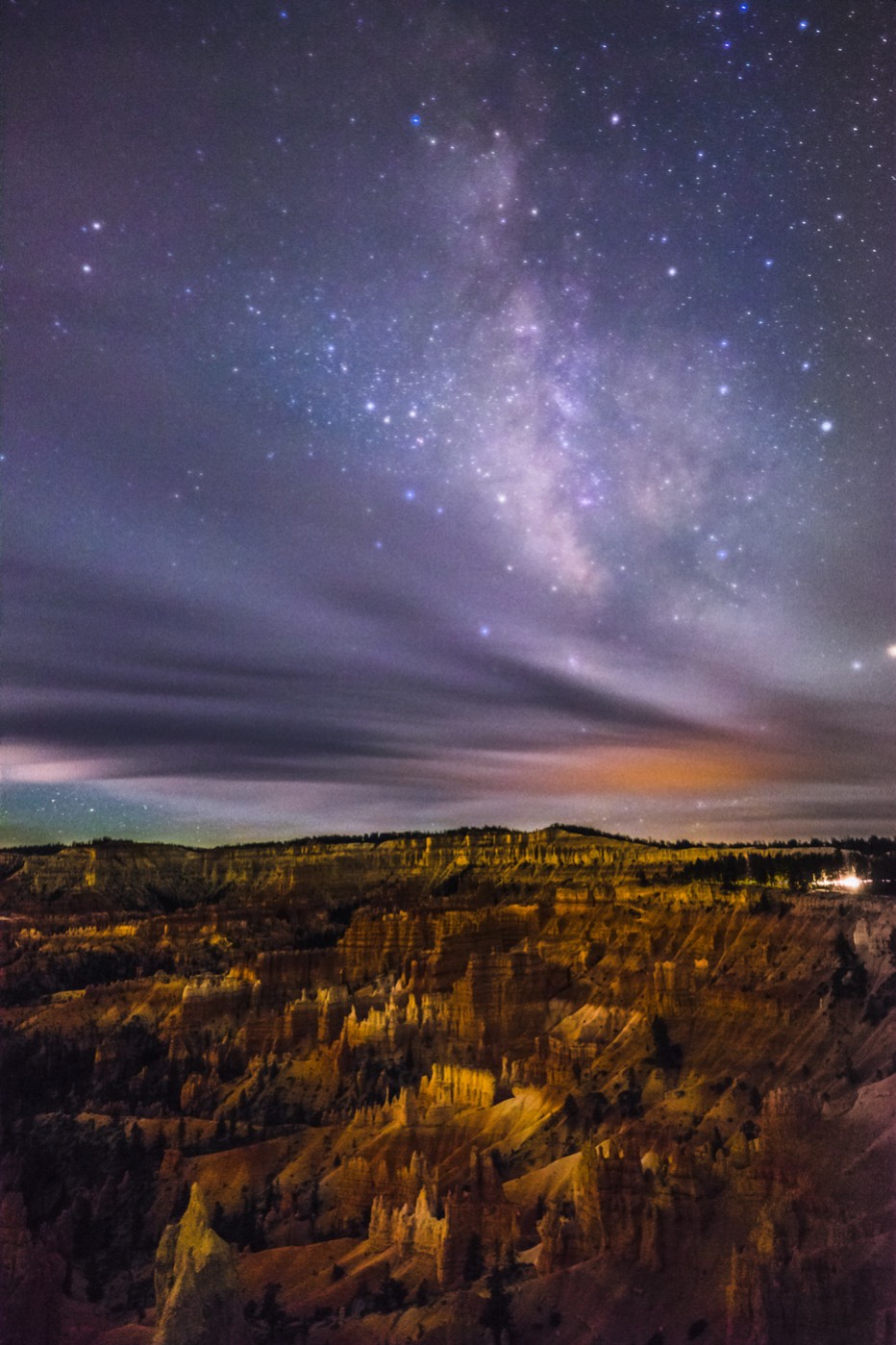
For another good comparison between various Fujifilm lenses for astrophotography, check out Jason Pitcher’s blog post where he tests out the Rokinon 12mm/2, Fujifilm 16mm/1.4, 18mm/2, 23mm/1.4, and 35mm/1.4 in a direct side-by-side comparison!
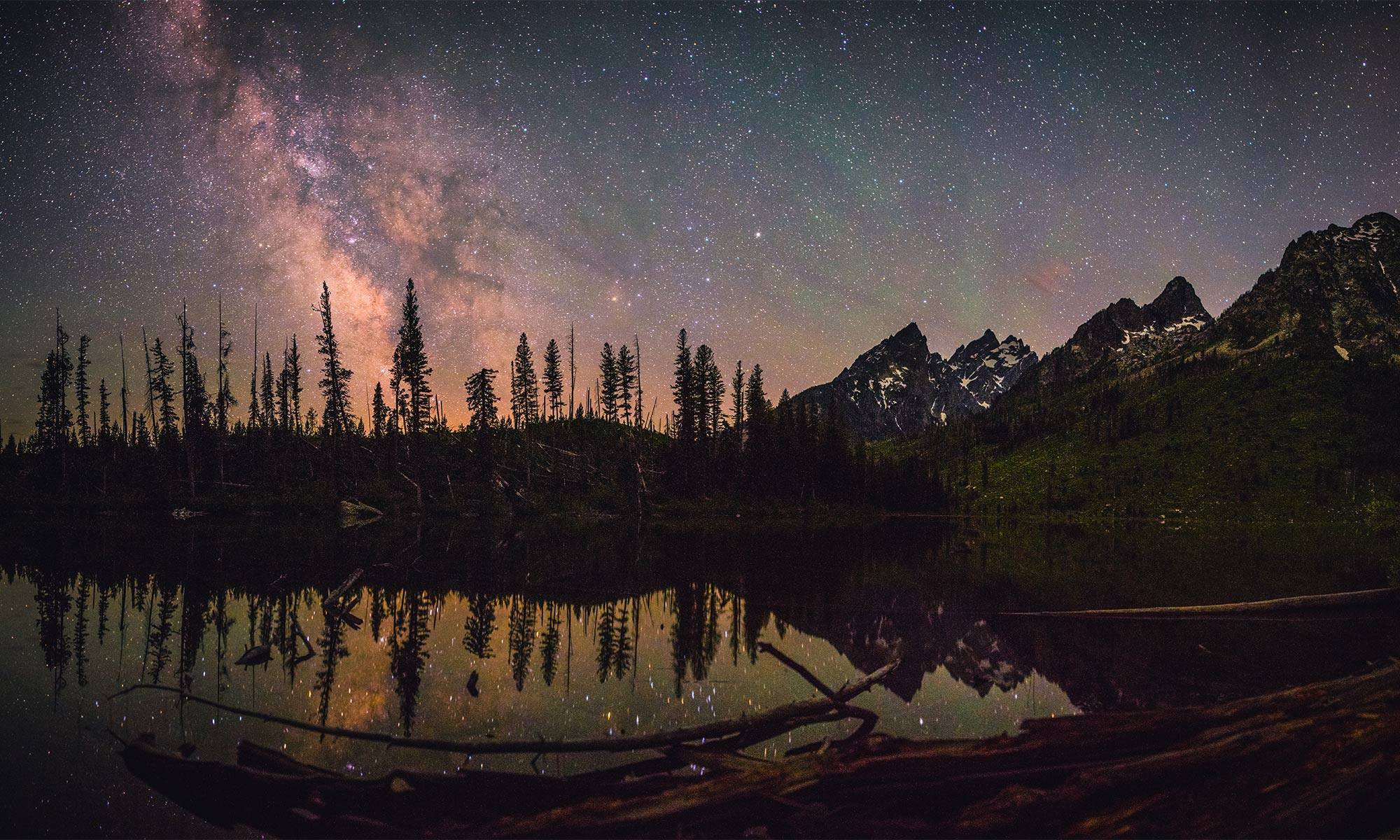
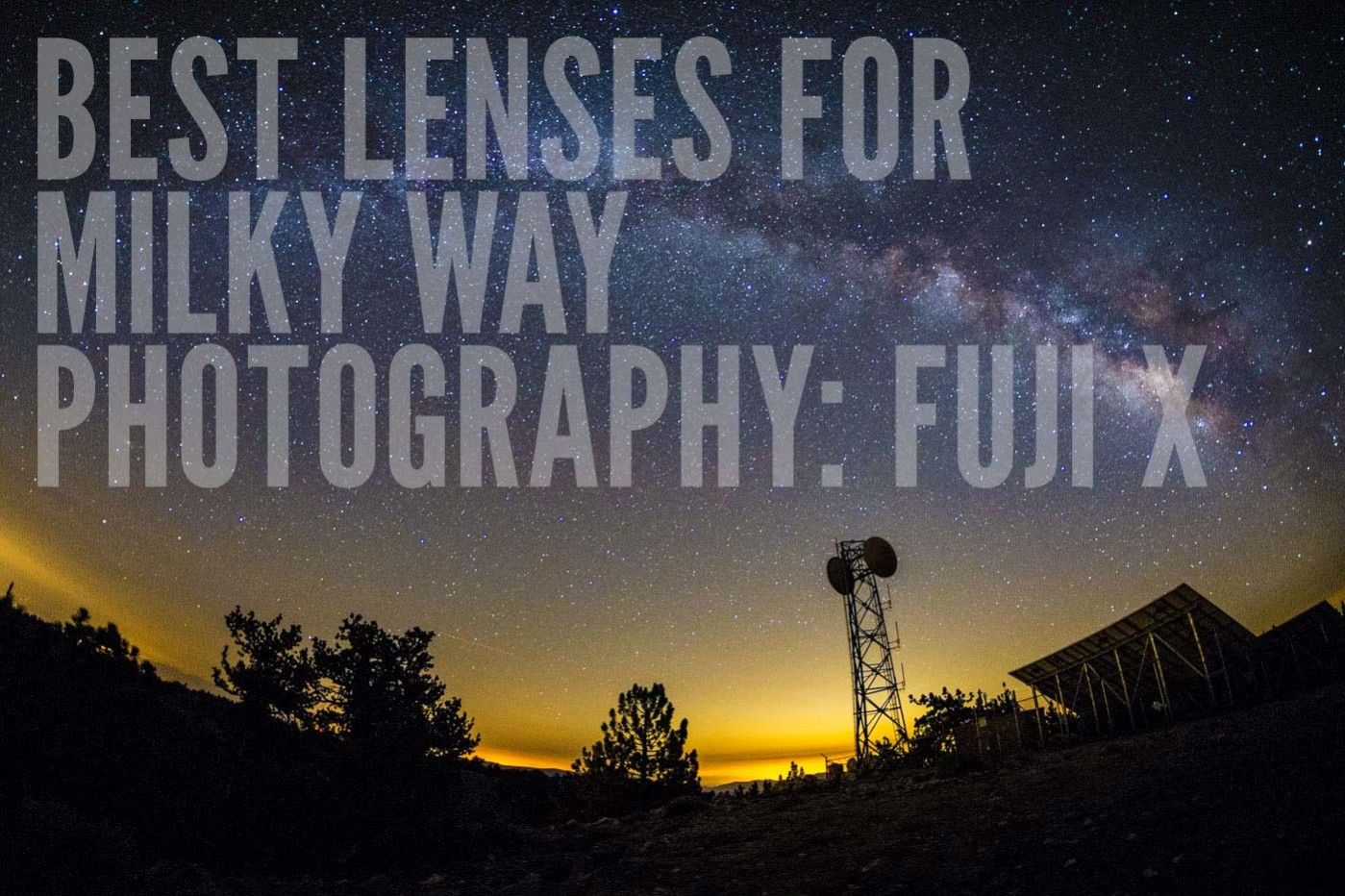
So I take it that the 16mm 1.4 that’s on the Fuji roadmap for 2015 will take the top of this list, no? Thinking next year may be the year I go totally Fuji (currently have an X100 and a Canon 6D. Starting to wish my X100 was a X100s because my x100 doesn’t do too hot in low light.)
Is the Fuji system your favorite for how compact it is? (obviously paired with the quality of their lenses– seems to be the shortcoming of Sony’s full frame compacts at the moment.)
Do you notice much of a loss of image quality as opposed to a full frame Nikon or Canon? Kinda torn on going back to APS-C, but I’ve loved my X100’s image quality, so maybe I just need to get over this attachment to full frame.
sloanie,
I imagine the 16mm/1.4 will be a pretty darn good lens. I hope that Fuji will be able to keep coma and astigmatism to minimal levels with this new lens. If they can keep aberrations to a low level, it should be a great lens.
I have used a lot of different camera systems now and I still think that the Fujifilm X-Series is my favorite overall system. It’s small, they have a great selection of lenses and the quality of the photos are top notch. I find that with a fast enough lens, image quality can match a full frame camera. Don’t get me wrong, cameras like the 6D and the D610 are amazing but Fujifilm has created a really great system that presents itself in a way like no other camera system.
The thing to keep in mind with all of this is that all of these cameras are pretty much amazing and I would warn anyone that switching systems rarely results in better photographs. The main reason I started looking into mirrorless cameras was primarily for the reduced size.
I really want to see more from Sony for sure. I think the a7 cameras are spectacular but the lens lineup is definitely immature. That said, only a couple years ago, the same could be said for the Fujifilm X system so hopefully Sony delivers a better lens selection in a years time.
Hey Ian, will you be updating this post with the soon-to-be released Samyang 10mm f2.8? I can’t decide between that and the 12mm f2 for WF astrophotography.
Thank you so much, Ian. I just sold my 14 mm. to get 10-24 mm. Bad luck. Luckily 18 mm. is quite cheap here in Thailand. Hopefully, I will have a chance to try during my next trip. 🙂
Nick, I would be interested to hear how the 10-24mm works. If I were you, I would try it out. The Fuji X-Trans sensor handles noise very nicely so I might be worth a shot. Let me know what it’s like!
How about XF 10-24/F4.0? as it seems that it only scores around 500. Please advise. or I guess I should do it with 18/2.0 then.
I have not personally tried the 10-24mm/4 so I can’t speak from any direct experience. It’s my opinion that the XF 10-24mm/4 is a little bit too slow but that doesn’t mean it won’t work. You’ll be able to take photos just fine but you’ll likely find that even at 30 seconds and ISO 6400 in a dark sky location, the exposure will be a bit dark. Having to push it any brighter with post processing will likely increase noise levels a bit. If you don’t mind a bit of noise, then the lens will still make a good photo. If you have the lens, try it out for sure but if you’re looking for a lens that will give you the best results, there are better options. The 18mm/2.0 is surprisingly good, I only wish it was a little bit wider.
I read your post on ETTR. I live in a light-polluted area and am interested to try this technique using my Fuji X100. Is it possible to achieve this using the bulb function, and if so, what settings should I use?
Either Bulb (B) or Time (T) mode will allow you to take photos with a long shutter speed. I recommend trying T Mode. Start with 20 seconds, f/2.0, ISO 3200 and adjust accordingly.